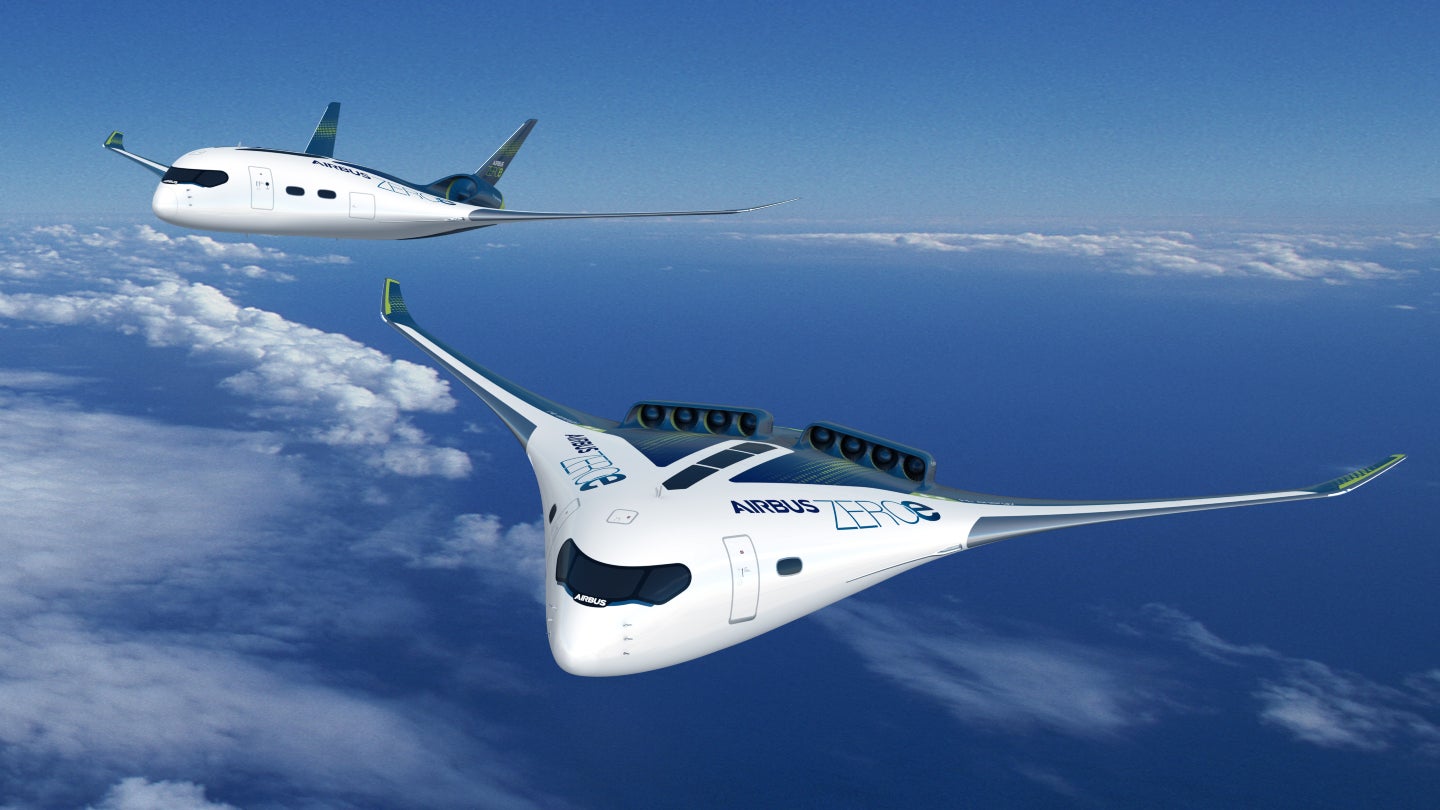
New blended-wing body (BWB) aircraft could significantly reduce noise pollution at airports, according to researchers at the Swiss laboratory Empa, which found they were significantly less noisy than current aircraft models.
The aircraft, which feature a fuselage that merges into its wings to create less air resistance and lower fuel consumption, have been around since the 1920s; but were rarely considered for plane designs until the last decade when several manufacturers have revisited the idea.

Discover B2B Marketing That Performs
Combine business intelligence and editorial excellence to reach engaged professionals across 36 leading media platforms.
Empa’s research has found that the BWB aircraft used in its digital simulations was rated 4.3 units less noisy at best than current passenger jets if used with other noise reduction technologies, such as low-emission engines.
While researchers admitted that it is hard to know which variant of BWB aircraft could be used in the future, the research still shows a clear difference.
Reto Pieren, one of the researchers at Empa’s Laboratory for Acoustics/Noise Control, said: “The greatest contribution to noise reduction undoubtedly comes from the shape of the aircraft, which shields the engine noise downwards, other noise reduction technologies only account for around 15% of the reduction in annoyance.”
The research included asking 31 people aged between 18 and 61 to participate in spatial simulations at Empa’s AuraLab, to rate their impressions of different “noise scenarios” including how annoyed they were or how familiar the sound felt.

US Tariffs are shifting - will you react or anticipate?
Don’t let policy changes catch you off guard. Stay proactive with real-time data and expert analysis.
By GlobalDataEmpa’s findings could prove another boost to the aircraft type, which has yet to reach wide use but has been identified by some manufacturers as a potential path for more sustainable aviation.
While Boeing and NASA developed prototype versions of their X-48 BWB aircraft in the 2000s and early 2010s, the idea was picked up by more manufacturers in the 2020s including Airbus, Bombardier, and the US Air Force-backed start-up JetZero.
Airbus included a BWB aircraft in its potential designs for its ZEROe range of next-generation hydrogen-powered sustainable aircraft, capable of carrying up to 200 passengers.
While the French manufacturer has showcased a small-scale demonstrator version of the aircraft, CEO Guillaume Faury recently said that the company may need state support to develop its new aircraft, saying he was committed to an existing finance model of government loans repayable when a new model reached specific order levels.





